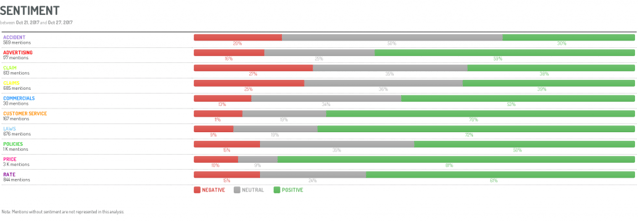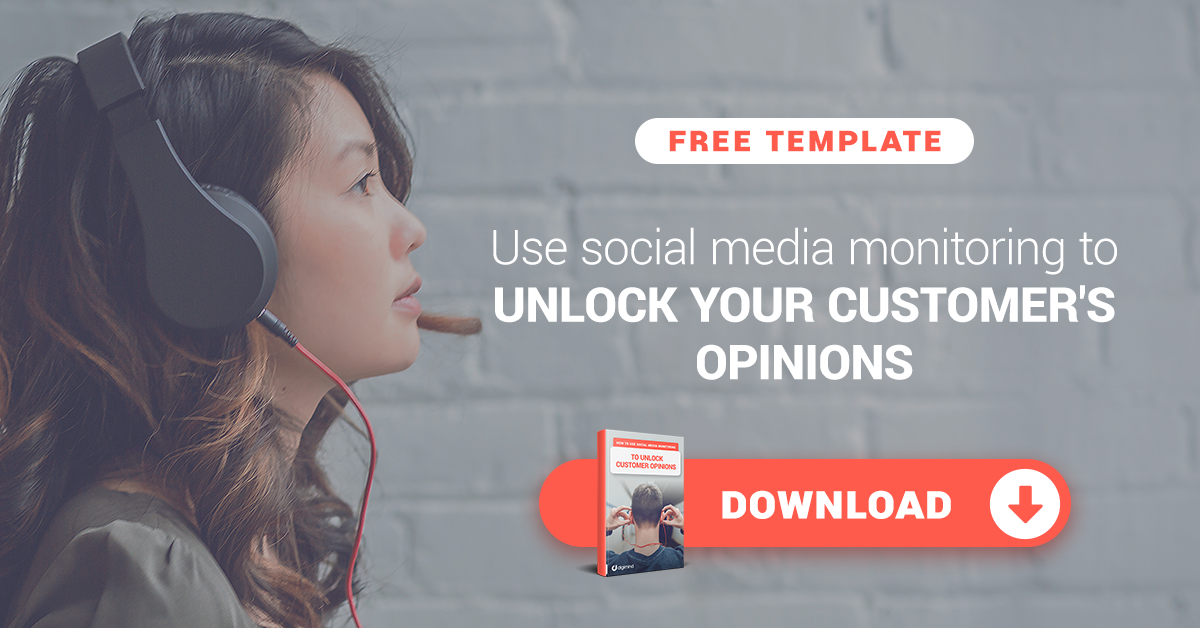Analyzing Customer Feedback with Social Media
Understanding consumer behavior and customer demand is a powerful lever for tailoring content strategy and driving sales. According to Statista.com, 81% of Americans had at least one social media profile by 2017 - social media channels are full of relevant insights useful for personalizing branded content to fuel rich and adapted marketing services. Integrating social listening services to monitor conversations across social media and other online conversation forums allows brands to collect consumer profiling data in real time.
The collection of social data must be followed by analysis to segment this data thematically and demographically. Social media intelligence allows marketers and salespeople to deliver the appropriate content for the target audience.
Below are 6 client success stories in which brands used social insights to enrich their customer knowledge and content marketing strategies.
1. Capturing Social Media Insights to Identify New Prospects
One of the largest international insurance companies used social listening to help its sales teams with customizing content for approaching new prospects. The insurer wanted to customize digital customer relationships with both existing policyholders and prospective customers in order to improve their online contact points and to increase customer loyalty. The communications department began a social media analysis project in order to capture insight which would enrich discourse between clients and agents. The project began by identifying common topics of discussion between agents and prospective clients and segmenting them by theme, product, stage of consumption process, and by issue.
Online social content was classified into the categories of corporate communication, customer claim, product by type of insurance, prospecting, and informational requests. Their social media analytical practices were complemented with regular searches for competitive intelligence, product feedback, and news media monitoring in order to successfully customize communications to prospective and current clients and anticipate potential issues and complaints.
 An analysis of volume of mentions by social media platform, via Digimind Social.
An analysis of volume of mentions by social media platform, via Digimind Social.
2. Monitoring Customer Feedback to Increase Customer Retention Rates
Brands can motivate customers to stay loyal by demonstrating an ability to actively listen and respond to comments, questions, and concerns. This seems obvious, however 4 out of 10 brands do not actively respond to consumers on social media.
Listening to customer conversations enables brands to capture consumer expectations, frustrations, and satisfaction points and to develop tailored responses and initiatives to improve their service offerings.
While brands might monitor direct mentions at social media, 85% of consumers do not use a brand’s direct handle (ex. @digimindci) when sharing experiences online. Therefore, use of an extended social listening tool which does not only monitor owned media, but all social media, forums, and other blog spaces where customers may mention a brand experience is highly beneficial.
A high-end hotel chain used social listening to discover that customers were positively reacting to one element of their interior decoration on social media. The chain’s management took note of this and decided to customize this decorative element on a daily basis. This demonstrated a high level of receptivity to consumer feedback and commitment to customer opinion, and led to many positive reviews and reactions on social media.
3. Creating Targeted Marketing Campaigns with Customer Profiling
Understanding market trends and customer expectations is essential for developing relevant and engaging consumer-oriented marketing strategies. As consumer behaviors and preferences are constantly evolving, real time social listening helps to align content marketing strategies with such preferences.
 A example demographic analysis, via Digimind Social.
A example demographic analysis, via Digimind Social.
A hardware, communications, and electronics company discovered that its target audience was moving away from video-sharing platforms like YouTube and Vimeo for more specialized live-streaming sites. As a result, the company shifted its efforts towards using the preferred platforms in order to accurately broadcast events and promotions. By identifying the channels on which the brand’s target audience was most active, the company experienced higher customer satisfaction and retention rates.
4. Using Social Media to Reach New Consumers
Road safety campaigns are one of the many lines of communication from which insurers to deliver corporate messages and raise awareness on public safety issues. To enhance the virality of road safety campaigns insurers are more and more frequently relying on digital communications, specifically social media.
In May, a major insurance company launched a new marketing operation on Snapchat, which included campaigns for the prevention of drunk-driving. This use of Snapchat in marketing strategy was among the first for the insurance industry - an innovative solution to raise DUI awareness with millennials.
5. Improving Customer Experience with Social Data
As social media is constantly evolving, it’s necessary for customer service strategies to evolve simultaneously. Social strategy needs to increase consumer engagement while actively responding to customer complaints. The challenge, then, is to develop proactive plans for turning potentially negative customer experiences positive with the aid of social media analytics.
 A sentiment analysis of key issues, via Digimind Social.
A sentiment analysis of key issues, via Digimind Social.
A French supermarket chain uses social listening to capture consumer opinions on social media and identify negative feedback about their products and services. They chose to primarily monitor Facebook and Twitter as their products and services are most frequently mentioned on these channels. Brand mentions were then segmented by type of product and by social media channel. The chain created an alert system to notify customer service employees of all negative comments in order to identify key issues and the types of users who most frequently make complaints.
6. Evaluating Customer Receptivity to New Products
To evaluate the ROI of a content marketing strategy, it’s important to measure its impact on earned media, owned media, and on user queries on mainstream search engines like Google. This information helps brands to determine:
- Which branded social content is most and least successful
- Which channels yield the best engagement rates
A beverage brand management company uses social listening in order to accurately determine brand reputation. Following the publication of a blog post promoting a new flavor, they found that the most commonly search query associated with the brand was the new flavor. The brand was able to successfully measure customer interest in the new flavor before launching it.

